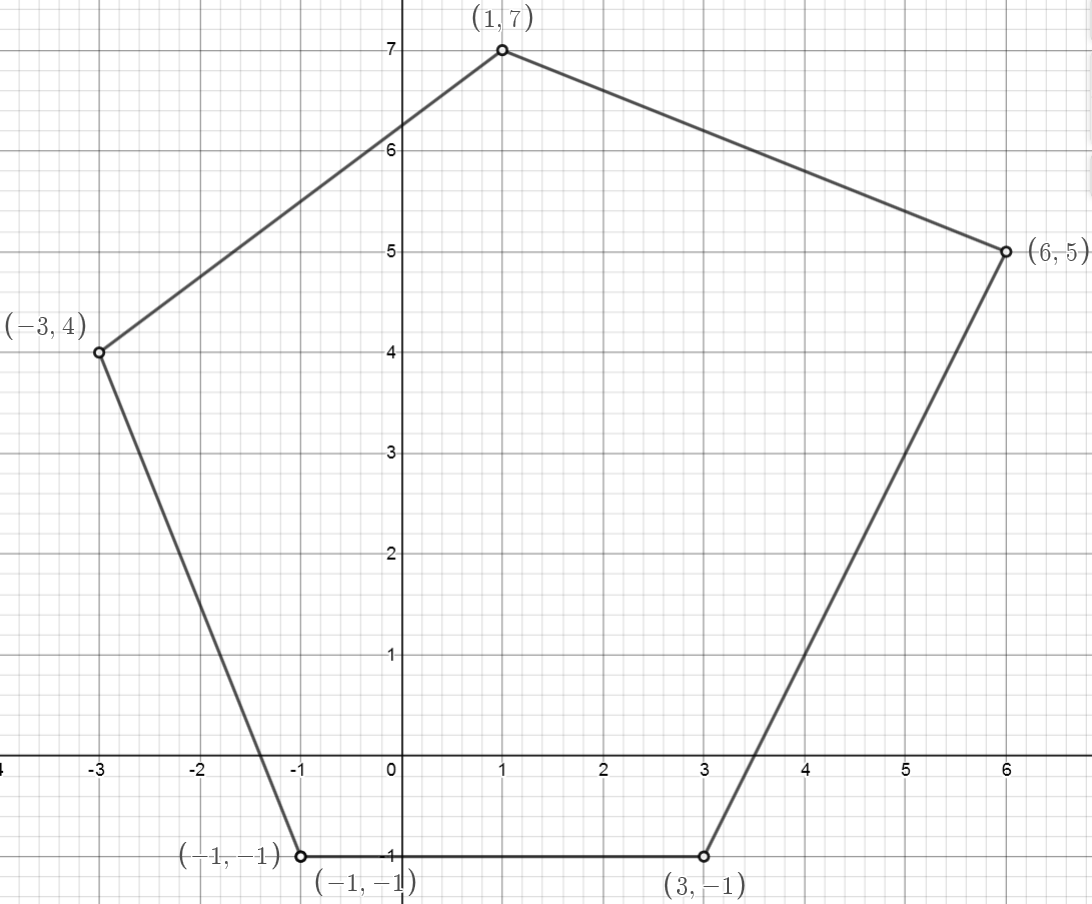The vertices of a convex pentagon are (-1,-1), (-3,4), (1,7), (6,5), and (3,-1).
What is the area of the pentagon .

Use the Gauss's shoelace area formula. Fill the table in counterclockwise.
\(\begin{array}{|lll|} \hline \mathbf{\text{The area of a convex pentagon } }: \\ \begin{array}{r|rr|c} \hline \text{Point} & x & y & \text{cross products} \\ \hline (-1,~-1): & -1 & -1 \\ & & & (-1)*(-1) -(3)*(-1) \\ (3,~-1): & 3 & -1 \\ & & & 3*5 -6*(-1) \\ (6,~5): & 6 & 5 & \\ & & & 6*7-1*5 \\ (1,~7): & 1 & 7 & \\ & & & 1*4 -(-3)*7 \\ (-3,~4): & -3 & 4 & \\ & & & (-3)*(-1) -(-1)*4 \\ (-1,~-1): & -1 & -1 & \\ \hline & & & \text{sum }~=1+3+15+6+42-5+4+21+3+4 \\ & & & \mathbf{=94} \\ \hline \end{array}\\ \hline \end{array}\)
\(\begin{array}{|rcll|} \hline \text{The area of the convex pentagon} &=& \dfrac{1}{2}*\text{sum} \\\\ &=& \dfrac{94}{2} \\\\ &=& \mathbf{47} \\ \hline \end{array}\)
Source "Gauss's magic shoelace area formula and its calculus companion" see:
https://www.youtube.com/watch?v=0KjG8Pg6LGk
![]()